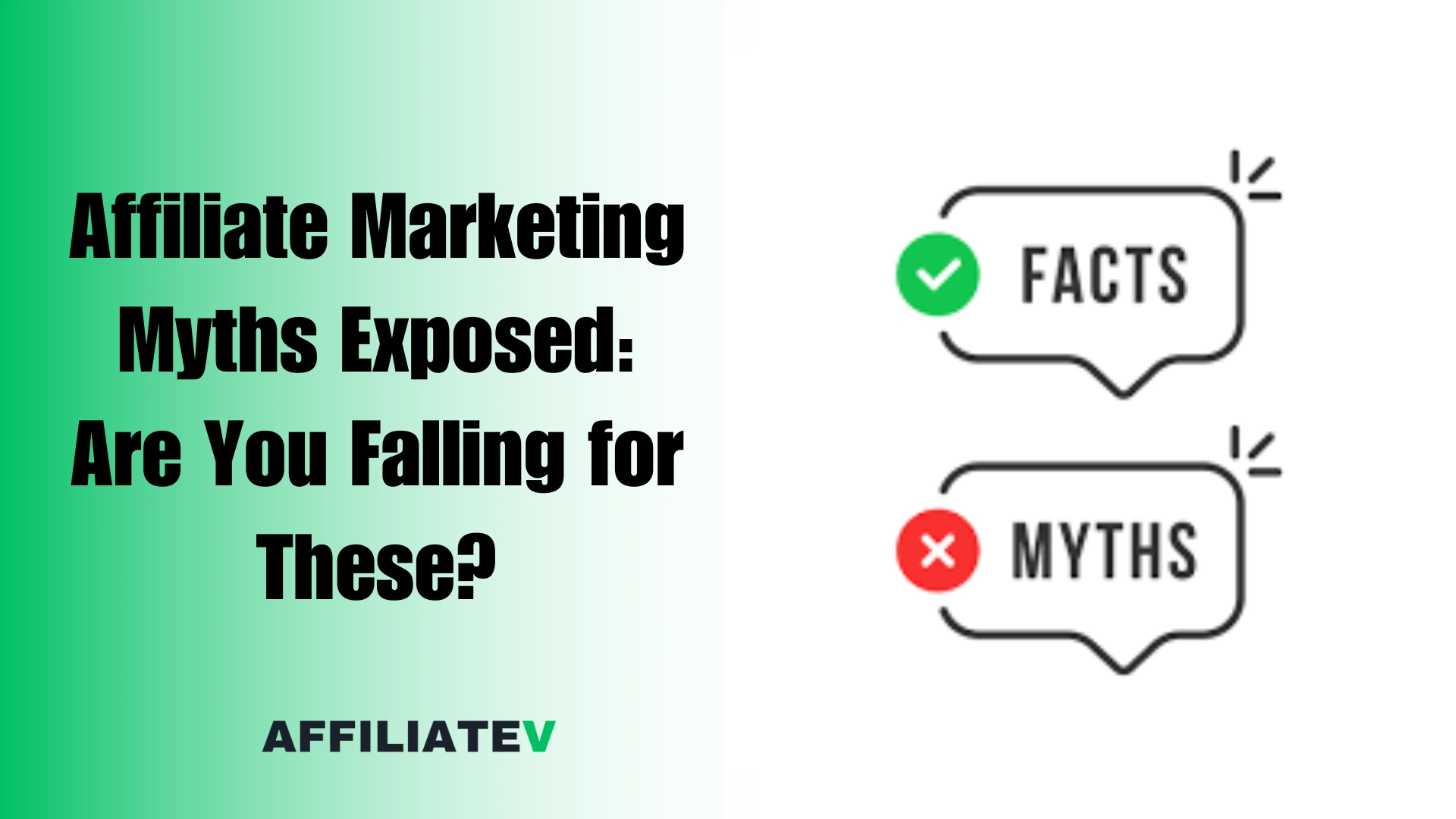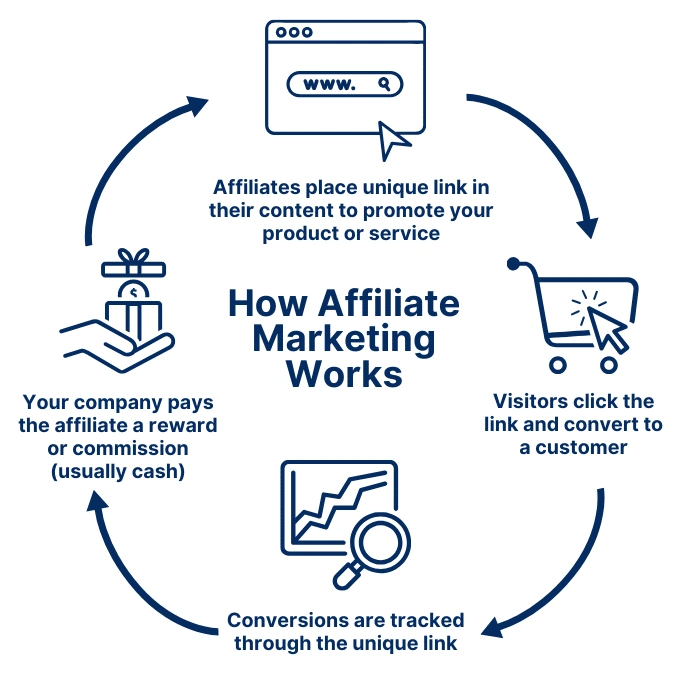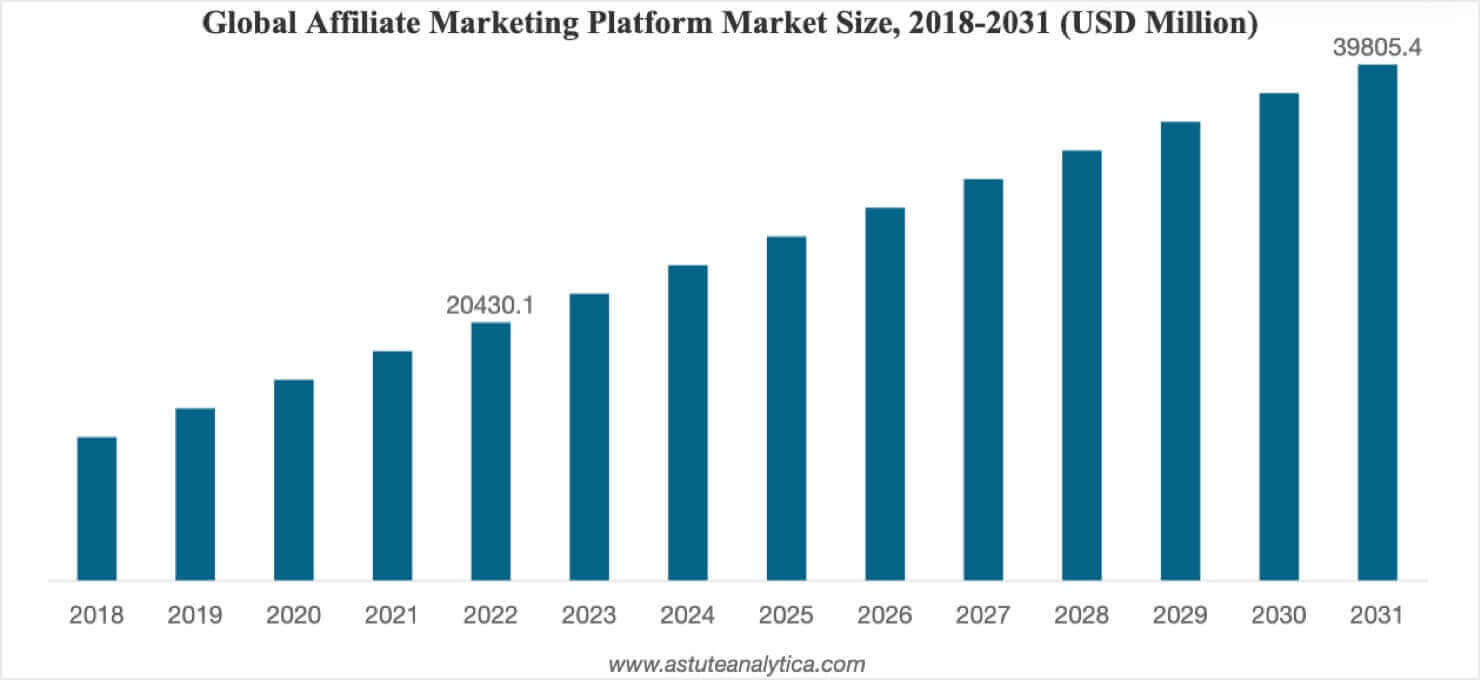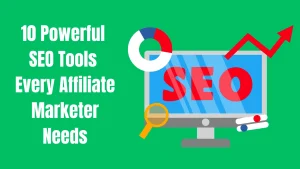6 Affiliate Marketing Myths Exposed: Are You Falling for These?

Think affiliate marketing is a quick way to get rich? Think again.
Affiliate marketing is bigger than ever. Brands pour billions into partnerships, and new affiliates join every day, hoping to cash in. It sounds so simple, right? Promote a product, drop a link, and collect commissions. But that’s not how it works.
Many people enter the space with false expectations. They think it’s easy money, requires no effort, or works overnight. These affiliate marketing myths set them up for failure. Some waste months chasing shortcuts. Others quit before seeing results.
The truth? Affiliate marketing takes strategy, consistency, and patience. But when the right strategies are incorporated, it can be one of the most rewarding online businesses.
In this article, I’ll break down six of the biggest myths stopping people from succeeding. More importantly, I’ll show you what actually works.
Affiliate Marketing Mastery is my best guide for this topic. It covers everything you need to know about building a successful affiliate business. I highly recommend it for anyone serious about making affiliate marketing work.
Understanding Affiliate Marketing
Affiliate marketing is simple at its core. You promote someone else’s product and earn a commission when someone buys through your link. Brands get sales, customers get what they need, and you get paid. It’s a win for everyone.

There are different ways to do it. Some affiliates use blogs, YouTube, or email lists. Others run paid ads or social media pages. The key is driving traffic to your links and getting people to trust your recommendations. If they don’t trust you, they won’t buy.
Most affiliate programs are free to join. You sign up, get a unique link, and share it. When someone clicks and makes a purchase, you earn a percentage. Some programs pay per sale, while others pay per lead or click. Commissions vary, but the best programs offer high payouts and recurring earnings.
Affiliate marketing isn’t passive income right away. It takes time to build an audience and find the right offers. But once things are set up, commissions can roll in even while you sleep. The key is consistency—keep testing, keep improving, and don’t expect instant results.
Affiliate Marketing Myths You Should Never Fall For
Many people jump into affiliate marketing with the wrong ideas, and it costs them. Myths spread fast, but believing them can wreck your success. Let’s clear up the biggest misconceptions so you don’t waste time chasing the wrong strategy.
Myth #1: Affiliate Marketing Is a Get-Rich-Quick Scheme
A lot of people jump into affiliate marketing expecting fast money. They hear stories about six-figure earnings and assume it happens overnight. Don’t rely on social media. Social media doesn’t help—people post flashy screenshots, but they never show the months (or years) of struggle behind them.
Here’s the truth: affiliate marketing takes time. You need the right strategy, a steady flow of traffic, and content that actually converts. Success doesn’t come from slapping links everywhere and hoping for clicks. It comes from consistency, testing, and figuring out what works for your audience.
Look at top affiliate marketers like Pat Flynn or Adam Enfroy. They didn’t get rich in a month. Pat spent years growing Smart Passive Income before it became a big success.
Adam built his blog from scratch and took nearly a year to see serious income. They stuck with it, learned from mistakes, and kept improving.
Here is one of Adam’s tweets on the mistakes he made:
I made a lot of mistakes growing my blog from $0 a 7-figure/year business.
— Adam Enfroy (@AdamEnfroy) November 7, 2021
Here are 10 things I wish I knew before starting my blog:
Affiliate marketing works, but not if you treat it like a lottery ticket. If you want real results, commit to the process. Keep building, keep testing, and give it time. That’s how real success happens.
Myth #2: You Need a Huge Audience to Succeed
A lot of people think only influencers with massive followings make money in affiliate marketing. They assume you need millions of views, thousands of clicks, and nonstop traffic. That’s not true. A small, loyal audience can be far more profitable than a massive, disengaged one.
Success comes down to trust. A niche audience that values your recommendations will convert better than a broad, uninterested crowd. People don’t buy just because they see a link—they buy because they believe in the person sharing it.
That’s why smaller creators who focus on a specific topic often make more than influencers who promote random products.
Take someone running a blog about high-end coffee gear. They may only get a few thousand visitors per month, but if those readers are passionate coffee lovers, they’re more likely to buy an expensive espresso machine through an affiliate link. Compare that to a general influencer who posts about everything—some might click, but many won’t care.
Growing without a huge audience is all about strategy. SEO brings in free search traffic. Email marketing turns casual readers into loyal buyers.
Social media, even with a small following, can drive sales with the right content. It’s not about reaching everyone—it’s about reaching the right people and giving them a reason to trust you.
Myth #3: More Affiliate Links = More Money
Some people think cramming a page with affiliate links means more clicks and bigger earnings. It doesn’t. Spamming links makes content look desperate, and readers notice. If they feel like you’re just trying to sell, they’ll ignore your recommendations—or worse, stop trusting you altogether.
What actually works? High-quality content with well-placed links. People don’t click just because a link is there. They click because the content helped them, answered a question, or solved a problem. That’s why content matters more than the number of links you use.
Certain types of content convert better than others. Product reviews work because people want honest opinions before buying.
Tutorials show how a product solves a real problem, making it easier for people to decide.
Comparison posts help readers pick between options, increasing the chances of them using your link.
The goal isn’t to throw links everywhere—it’s to make them feel natural. A well-placed link in valuable content will always perform better than a hundred scattered links in a useless post. Focus on earning trust, and the clicks (and commissions) will follow.
Recommended reading: How to Add Affiliate Links to Your Blog Naturally Without Sounding Pushy or Salesy
Myth #4: You Can Promote Any Product and Succeed
A common mistake in affiliate marketing is thinking you can promote anything and make money. It doesn’t work like that. If your audience doesn’t trust your recommendations, they won’t buy.
Relevance matters. If you run a fitness blog, pushing gaming laptops won’t make sense. But promoting high-quality supplements or workout gear? That’s a different story.
Choosing the right affiliate programs is just as important. Not all programs pay well, and some products aren’t worth the effort.
Look for brands with solid reputations, fair commissions, and products people actually want. Avoid low-quality products just because they offer high payouts. If buyers regret their purchase, they’ll blame you, not the company.
So, how do you pick the best products? First, know your audience. What do they need? What problems do they have? Next, focus on products that solve those problems.
High-converting products usually have strong demand, good reviews, and a history of consistent sales. If a product gets a lot of refunds, stay away.
Affiliate marketing is about providing real value. The better your recommendations, the more your audience will trust you. And trust is what turns clicks into commissions.
Recommended reading: Top 9 Affiliate Marketing Mistakes New Marketers Make and How to Avoid Them
Myth #5: SEO Isn’t Important for Affiliate Marketing
Some people think they can rely only on social media for affiliate sales. Bad idea. Social media is unpredictable. Algorithms change, engagement drops, and posts disappear fast. If you’re not ranking in search engines, you’re leaving money on the table.
SEO (Search Engine Optimization) helps drive long-term, passive traffic. Unlike social media, where posts fade in hours, a well-optimized blog post or website can bring in visitors for years.
People searching on Google already have intent. They’re looking for solutions. If your content ranks, you get free, consistent traffic, without having to post daily.
So, how do you use SEO for affiliate marketing? Start with keyword research. Find what people are searching for related to your niche. Use tools like Google Keyword Planner or Ubersuggest to find terms with decent search volume but low competition.
Then, optimize for intent—make sure your content answers what users actually want. A person searching “best protein powder for muscle gain” isn’t looking for general fitness tips. They want product recommendations.
Finally, structure your content properly. Use headings, bullet points, and short paragraphs. Make it easy to skim. Link to other useful pages on your site. And don’t just stuff your page with affiliate links
Google values helpful, well-organized content. Do it right, and you’ll get steady commissions without constantly chasing social media trends.
Myth #6: Affiliate Marketing is Dead in 2025
Some say affiliate marketing is dead. They claim there’s too much competition, algorithms are killing reach, and big brands dominate. Sounds dramatic, but it’s far from the truth. The game has changed, sure—but it’s far from over.
Affiliate marketing isn’t dying. It’s evolving. The industry is projected to reach $32.55 billion in global market size in 2025 and is expected to grow to nearly $40 billion by 2031.

What worked five years ago might not work now, but new strategies keep emerging. Video content is booming, short-form clips drive massive engagement, and AI tools help automate tasks like keyword research and content creation. Smart affiliates are adapting, not quitting.
The best approach today is multi-channel promotion. Don’t rely on just one platform. Combine SEO with YouTube, email marketing, and even TikTok. Create helpful, in-depth content that people actually trust.
Google rewards quality, and audiences remember affiliates who give real value instead of just pushing links.
Want proof it still works? Look at affiliates making money through niche review sites, comparison videos, and AI-assisted blogs. They’re not just throwing links everywhere—they’re building brands. If you’re willing to adapt, there’s still plenty of money to be made.
Conclusion
Affiliate marketing works, but not for people chasing shortcuts. The ones making real money put in the effort, learn the right strategies, and adapt when needed. If you’re expecting easy cash, you’ll quit before you earn a dime.
Success comes down to strategy, consistency, and patience. Pick the right niche. Create useful content. Build trust. Drive targeted traffic. That’s the game. Ignore the noise and focus on what actually moves the needle.
Affiliate marketing isn’t dying, and it’s not just for influencers. Small sites, niche blogs, and YouTube channels are pulling in solid income. The key is quality over quantity, not spamming links, not chasing trends without a plan.
If you’re serious about making this work, start the right way. Learn the fundamentals. Apply them. Stay consistent. If you want guidance, join my free email course and get a step-by-step roadmap to real results.
Frequently Asked Questions
How Long Does It Take to Make Money in Affiliate Marketing?
It depends. Some see results in 3-6 months, others take a year or more. Success comes from consistent content, SEO, and audience trust. Those who treat it like a real business—testing, optimizing, and improving—earn faster.
Do I Need a Website to Start Affiliate Marketing?
No, but it helps. Websites build credibility and long-term SEO traffic. However, some succeed through YouTube, TikTok, or email marketing. Pick a platform where you can create high-value content and engage your audience. Check this article for more information.
What Are the Best Niches for Affiliate Marketing?
Niches with high demand, low competition, and strong buyer intent work best. Examples: finance, health, SaaS tools, and tech gadgets. But niche success depends more on execution than topic. A well-executed small niche beats a broad, oversaturated one. Read more.
How Do I Drive Traffic to My Affiliate Links?
SEO is the most sustainable, but it takes time. Faster methods include social media, email marketing, YouTube, and paid ads. The key is to provide real value so people trust your recommendations and take action. Check this article for more information.
Is Affiliate Marketing Still Worth It in 2025?
Absolutely. The industry is projected to hit $40 billion by 2031. Platforms evolve, but affiliate marketing adapts—AI, video content, and multi-channel strategies keep it thriving. Those who stay ahead of trends keep winning.







Fantastic beat I would like to apprentice while you amend your web site how could i subscribe for a blog site The account helped me a acceptable deal I had been a little bit acquainted of this your broadcast offered bright clear concept
I’ve been following your blog for quite some time now, and I’m continually impressed by the quality of your content. Your ability to blend information with entertainment is truly commendable.
Your blog is a constant source of inspiration for me. Your passion for your subject matter is palpable, and it’s clear that you pour your heart and soul into every post. Keep up the incredible work!
Your articles never fail to captivate me. Each one is a testament to your expertise and dedication to your craft. Thank you for sharing your wisdom with the world.